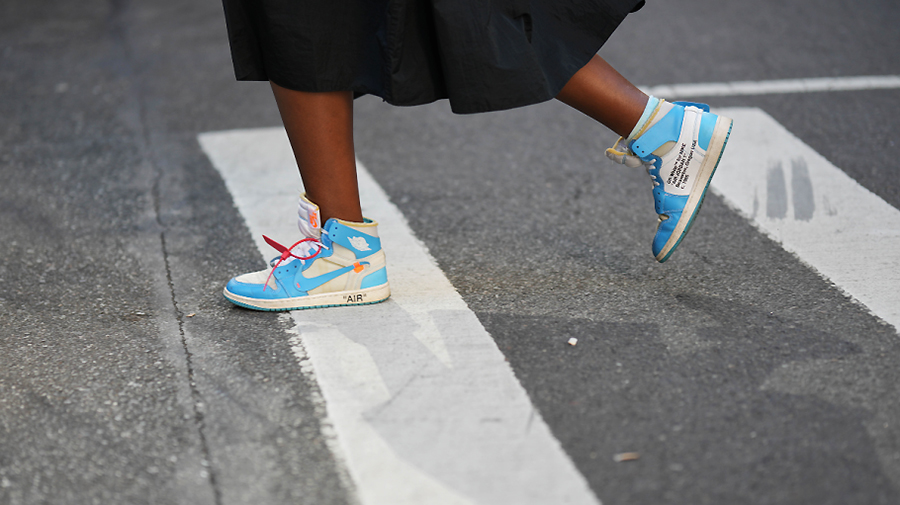Nike bounced back substantially to regain its position as the most popular apparel and footwear brand selling on Amazon, overtaking the e-tailer’s private label range after two years, according to Coresight Research’s sixth annual Amazon Apparel U.S. Consumer Survey.
Nike product is available on Amazon.com through third-party sellers.
Coresight’s survey, taken in March 2023, of about 2,000 U.S. consumers found that 33.8 percent of respondents had purchased Nike apparel or footwear on Amazon over the prior twelve months, up significantly from 20.9 percent in 2022. Coresight said of Nike’s improved selling rate on Amazon, “This suggests that the sportswear giant is successfully leveraging the growing popularity of sports and active lifestyle products while also keeping pace with online consumer demand for innovative products. At the same time, Nike has also reduced its dependence on third-party retailers.”
In 2017, Nike launched a pilot program to sell a limited product assortment direct to Amazon but canceled it in 2019 as part of a broader push to streamline its wholesale accounts and sell directly to consumers. Nike said in a statement at the time, “As part of Nike’s focus on elevating consumer experiences through more direct, personal relationships, we have made the decision to complete our current pilot with Amazon Retail. We will continue to invest in strong, distinctive partnerships for Nike with other retailers and platforms to seamlessly serve our consumers globally.”
In prior years, Coresight’s Amazon Apparel U.S. Consumer Survey found that 20.5 percent of respondents purchased Nike apparel in 2021, 29.9 percent in 2020, 25.8 percent in 2019, and 17.2 percent in 2018.
In Coresight’s six-year study, Amazon’s private label collections had overtaken Nike as the top apparel and footwear seller on the Amazon platform in 2022 and 2021 after Nike had come in first in the first three years of the survey.
Amazon’s private-label apparel dropped to second but still showed significant momentum, with 24.5 percent of U.S. shoppers stating that they had purchased private-label apparel from Amazon over the last twelve months, up 2.5 percentage points year-over-year. Coresight said in its report, “Amazon’s control of its online store and supply chain costs have made its own apparel products more visible, affordable and better- positioned to outcompete other brands.”
In 2022, Amazon’s private label brands made up approximately 19 percent of its clothing, shoes and accessories sales, according to Coresight estimates.
Under Armour was close behind Amazon in third, with 24.3 percent of respondents saying they bought UA apparel or footwear on Amazon over the last twelve months, up from 17.7 percent in 2022. Under Armour, like the wide majority of brands in the active lifestyle and fashion space, sells directly through Amazon and sees its brand sold via third-party sellers.
Rounding out Coresight’s Top 20 list of the top-selling apparel and footwear brands on Amazon was Hanes, cited by 23.2 percent of Coresight’s survey respondents; Adidas, 21.6 percent; Skechers, 20.0 percent; New Balance, 19.5 percent; Levi’s, 19.5 percent; Fruit of the Loom, 16.5 percent; Calvin Klein, 14.3 percent; Champion, 14.2 percent; Crocs, 13.2 percent; Puma, 12.6 percent; Columbia, 10.6 percent; Tommy Hilfiger, 10.1 percent; Victoria’s Secret, also 10.1 percent; Carhartt, 9.9 percent; Michael Kors, 9.8 percent; and Ralph Lauren, 9.3 percent; and Wrangler, 9.2 percent.
The Coresight survey found that Walmart ousted Amazon as the most-shopped retailer for apparel for the first time since 2019. Among the respondents, 51.5 percent purchased apparel at Walmart in the past 12 months versus 50.4 percent for Amazon. Rounding out the Top 10 of places where respondents purchased apparel over the last twelve months were Target, 29.6 percent; Kohl’s, 25.2 percent; Nike (Nike stores and websites), 22.2 percent; T.J. Maxx/Marshalls, 19.9 percent; Macy’s, 18.1 percent; Old Navy, 18.0 percent; Ross Stores, 15.0 percent; and JCPenney, 13.6 percent.
Other findings from Coresight’s survey:
- After seeing an increase last year, the proportion of consumers who purchased apparel from Amazon in the last 12 months fell by 2.0 percentage points this year to 68.4 percent, remaining above 2021 levels. However, the proportion of consumers expecting to buy clothing or footwear from the retailer in the next 12 months increased by 6.7 percentage points to 72.7 percent, the highest proportion in the past six years of the survey.
- This year, apparel shoppers cited a wider choice of brands as the number-one reason for shopping on Amazon.com for the first time in the survey’s six years, cited by 56.2 percent. Coresight said this suggested that Amazon apparel shoppers are looking to explore more brands alongside Amazon’s private label offerings. Other top reasons for shopping for apparel on Amazon included good, cheap delivery, cited by 49.3 percent; fast-free delivery (i.e., with Prime), 47.2 percent; easy to browse/search, 46.1 percent; and lowest prices, 41.8 percent.
- Footwear and women’s casual clothing remain respondents’ most sought-after items on Amazon in soft-goods categories, continuing to hold first and second place in the survey rankings, respectively. Children’s clothing and footwear, formalwear, coats and jackets (categories that include big-ticket items) remain the less-popular categories on the site.
Coresight estimated that Amazon sold $50.6 billion in clothing, footwear and apparel accessories in the U.S. in 2022, including sales by third-party sellers on its marketplace, making Amazon the largest company in the market, with its apparel sales just under 70 percent higher than its nearest competitor, Walmart (the banner, excluding Sam’s Club), which saw sales of around $30 billion in 2022.
Coresight wrote in its analysis of Amazon, “Amazon has solidified its position as a full-edged apparel retailer with particular pricing and logistics strengths, although it remains in competition with mass retailers and department stores. As measured by shopper numbers, Amazon fell behind Walmart this year after widening its lead last year. Nevertheless, the e-commerce platform’s ability to keep shopper numbers high in the apparel and footwear sector despite high input costs and supply chain disruptions points to its higher resilience level compared to store-based clothing and footwear specialists.”
Photo courtesy Getty
















